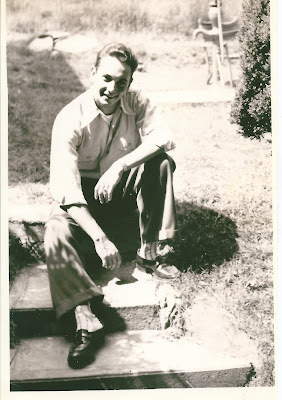Along the northern edge of Chapel Field at
Restoration Farm, a collection of new apple trees has recently been
planted. The trees are young – mere
twigs – but they have enormous potential.
The line of eight trees is named “Apple
Trace.” The word “trace” is not used
too often in this context. It is a
rustic descriptor, but seems appropriate for Restoration Farm and the purpose
of these trees. A “trace”
is defined as a visible mark, such as a footprint made or left by the passage
of a person, animal or thing. It is
evidence or an indication of the former presence or existence of
something.
There are some intriguing heirloom varieties found at Apple
Trace. Ashmeade's Kernel was first
grown from a seed planted by a physician named Dr. Ashmead in Gloucester,
England at the turn of the 18th century. The fruit is eaten fresh or pressed for
juice. Black
Oxford
can be traced to a seedling planted in Paris, Maine in 1790. The fruit is used for applesauce and baked
desserts. Cortland was bred in 1898 in Geneva, New York and has a pure white
flesh that is good for salads. Golden Russet is believed to have come
from a mid-nineteenth century New York state seedling and is considered an
excellent cider apple.
Honeycrisp has a
delicious crunch, and was developed in Minnesota in the 1960s. Newtown
Pippin is a Long Island native, first grown as a seedling in Queens, New
York and harvested in 1730. It was a
favorite of George Washington and grown at Thomas Jefferson’s Monticello and
works well in tarts and pies. Prairie Spy was developed in Minnesota
and raised from seeds planted in 1914.
It is a crisp, juicy, full-flavored eating apple. Winesap is an excellent storage apple and probably dates back to
the 18th century.
Apple Trace is planted in
memory of my Dad, James M. Barritt, Jr. who passed away on January 10,
2012. My Dad loved apples and ate one
every day for lunch. But, he also
played an important part in my involvement at Restoration Farm. My Dad and Mom first brought my brothers and
me to Old Bethpage Village Restoration when we were young and we would visit
often as a family – long before Restoration Farm was cultivated on the same
land.
Once I became a member at
the farm, we would visit together. One
of my favorite photos of my parents is a picture taken at the Restoration Farm
Summer Solstice potluck dinner in the field in 2010. It was a gorgeous summer afternoon and they
look so happy. So my memories of my parents
and my association with Restoration Farm are always entwined. It seems fitting that we plant Apple Trace to
honor my Dad at a place where I still visit so frequently and where he once
planted seeds of appreciation for history, the land and farming within me.
I am grateful to head
growers Caroline Fanning and Dan Holmes who were so supportive of this planting
in memory of my father, and to Glenn Aldridge who planted many of the apple trees
with such care. I look forward to the
years to come when Apple Trace will bear fruit and my Dad’s spirit will be
celebrated with beautiful apples shared with the community of members at
Restoration Farm.











































